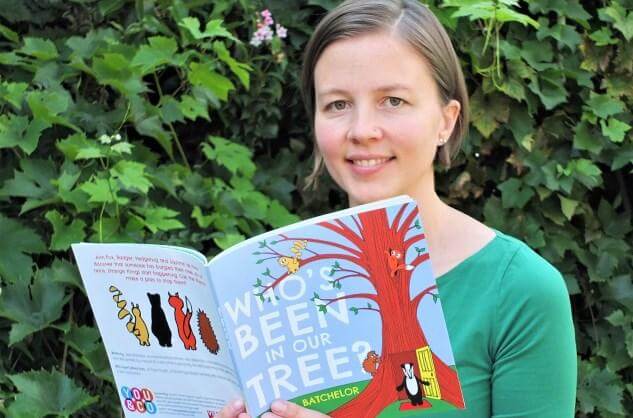Author Diana Batchelor
Experiencing a crime like a burglary can be a very traumatic experience for a child. As a parent or carer, it can be difficult to know how best to support them or make them feel safe in their home again.
Diana Batchelor, who spent three years as a support worker at Victim Support, has written a children’s book, ‘Who’s been in our tree?’ to help parents do just that.
Can you tell us about the book and who you’ve written it for?
The book is about four animals — Fox, Badger, Hedgehog and Squirrel. We meet them just after their tree has been burgled. First we see their shock, then some strange things start happening.
These ‘strange things’ are in fact common reactions to crime in young children. We see how the four friends make a plan to overcome the strange things, and realise some of their favourite things (including feelings and memories) were not stolen after all.
The book is for children who have experienced a burglary, but could also be used to help children who have experienced other kinds of trauma. I wrote the book with children aged 4-8 in mind, but support workers have found it can be helpful with children as old as 11.
Why did you write this book?
When I was a Children and Young People’s Worker for Victim Support, I supported a family whose young boy was having nightmares following a burglary. They asked if I knew of a story book they could read with him.
I searched high and low — on the internet, calling other agencies and making good old-fashioned trips to libraries! There was nothing, so some colleagues and friends suggested I write one. At first I thought they were being funny, but the idea took hold and here we are!
What were your reasons for choosing to focus on burglary and its impact on children?
There are around 650,000 burglaries in England and Wales each year, and Victim Support estimates that over 300,000 children are affected.
I thought if we could start to help very young children deal with trauma in a positive way, it would also help them deal with their feelings and build resilience for the future.
Can you tell us more about the process of writing the book? Was there anything you found particularly difficult?
I really enjoyed it, but it was difficult as I’d never done anything like it before. I thought of the storyline quite quickly, but then needed help making the language child-friendly. I initially did some very simple illustrations just to show people how the book might look. However, people told me they liked the quirky, colourful style, so then I became the official illustrator as well!
I’m grateful for all the help I had with the book. The plans the animals make in the book are based on psychological evidence, thanks to the input of Dr Fiona Snyder, a Clinical Psychologist working with children and young people in Kent and Sussex. I am also grateful for Victim Support’s help with getting feedback directly from children, as well as individuals who had experienced a burglary. They seemed to enjoy the story and find it useful.
What did you learn from your experience working at Victim Support and how did this help you?
My experience at Victim Support has given me knowledge of the range of reactions children can have after a burglary and other crimes, both in the short and long-term. Much of what I have included in the story I learnt directly from children themselves.
What advice would you give to parents or carers who are trying to support a child after a burglary?
Don’t force them to talk about it, but if they ask questions then be honest with them. Don’t assume you know what their worries are — ask them! Just taking the time to listen to them can make a big difference.
The three main messages they should hear from you are:
- Reassurance that you’ve made their home a safe place — show them any fixed windows, new locks or alarm systems.
- Let them know it’s normal to feel scared, grumpy or confused after something like a burglary, and that you understand why they feel that way. Tell them the best thing to do with those feelings is to let them out! This could be through talking, drawing, music, sports or some other way. If the effects are very extreme or seem to last an unusually long time then the burglary might also have triggered other anxieties. In that case you should seek specialist mental health support.
- Make a plan! Although no-one can change what happened, your child can do things to take charge of their own situation. Ask them what makes them feel happy and safe, and plan to do more of it. There are ideas for plans in the book, but your child will probably have their own ideas as well.
Finally, look after yourself! Children pick up the feelings of adults around them. Try to recognise ways you may also have been affected by the incident and find someone to talk to or make a plan of your own. You can get help from Victim Support or find help for children and young people on their You & Co website.
If you’d like to find out more about ‘Who’s been in our tree?’, you can visit the book’s website or email our You & Co team. You can also purchase it from Waterstones, Blackwells or Amazon.

